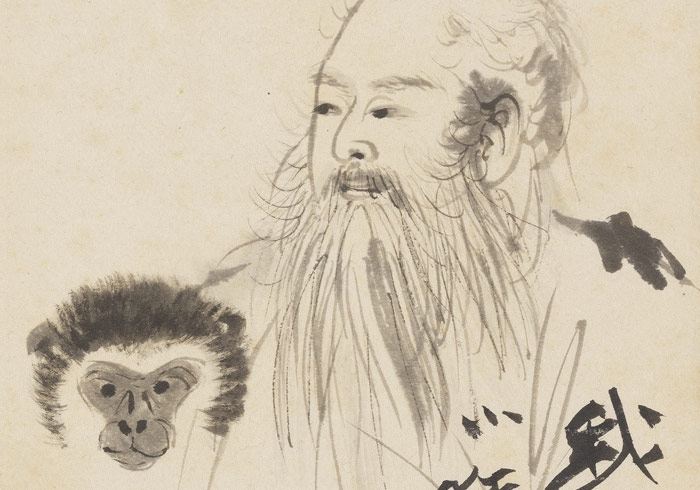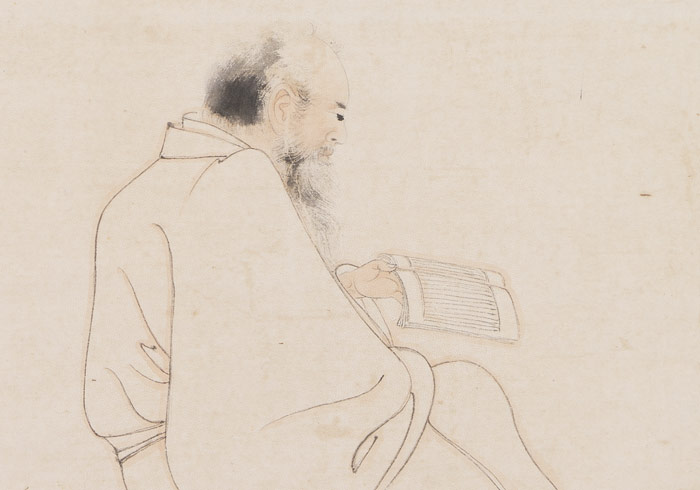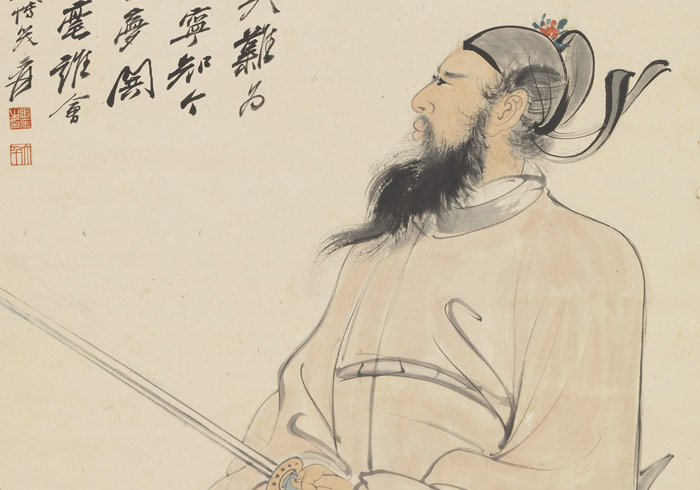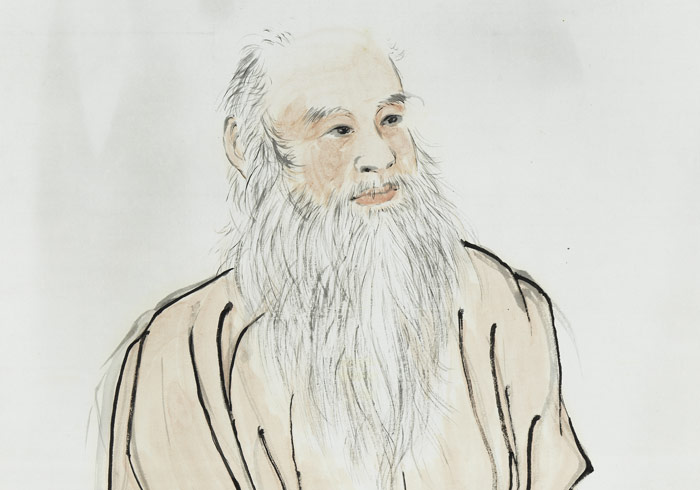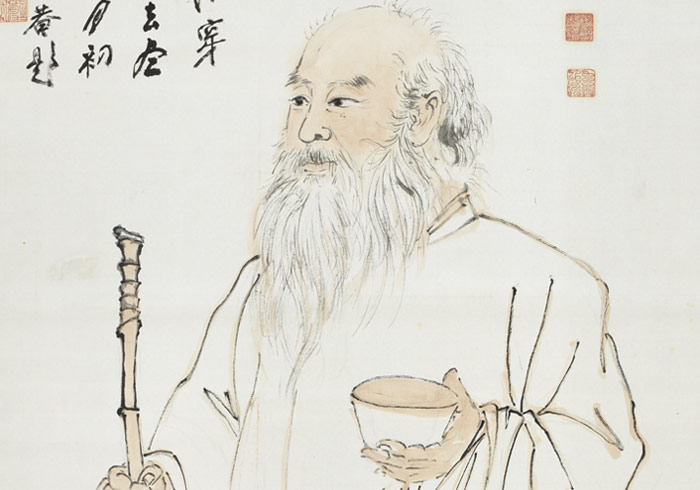Chang Dai-chien was the modern Chinese artist who loved most to do self-portraits, painting more than a hundred of them over the course of his career. A total of ten self-portraits by Chang have been selected for this exhibition, ranging from small album leaves to large hanging scrolls. Four are in the National Palace Museum collection and six currently entrusted from the National Museum of History. The most obvious difference between Chang's self-portraits and those by other painters is that he was not confined to the tradition of formal realistic portraiture. For example, in "My Little Monkey and I" he includes a cute gibbon that he loved so much, while in "Self-Portrait at 59" he appears in the guise of an ancient scholar reading. In "Self-Portrait Begging," he takes the role of a mendicant monk seeking alms for a living, and in "Zhong Kui" he even assumes the form of this legendary figure from Chinese mythology and folk belief. In terms of style, most of Chang Dai-chien's self-portraits are in the expressive "sketching ideas" manner. Were it not for the long tell-tale beard that he sported, it would be difficult sometimes to tell them apart from regular figure paintings. And it is precisely because of the direct and diverse approach that Chang took with form and format, presenting him so vividly and alive as the unbridled artist he was, which make his portraits that much more enjoyable to appreciate.
My Little Monkey and I
- Chang Dai-chien (1899-1983), Republican period
- Album leaf, ink on paper, 23.8 x 35.8 cm
This leaf is from an album, a Significant Historic Artifact, in the collection of the National Museum of History.
Self-Portrait at 59
- Chang Dai-chien (1899-1983), Republican period
- Hanging scroll, ink and light colors on paper, 133.5 x 33.8 cm
Zhong Kui
- Chang Dai-chien (1899-1983), Republican period
- Hanging scroll, ink and colors on paper, 93.5 x 48.6 cm
Self-Portrait at 70
- Chang Dai-chien (1899-1983), Republican period
- Hanging scroll, ink and colors on paper, 128 x 68 cm
Mr. Paul Chang, the son of Chang Dai-chien, presented this painting as a gift to the National Museum of History in 2014.
Self-Portrait Begging
- Chang Dai-chien (1899-1983), Republican period
- Hanging scroll, ink and light colors on paper, 135.9 x 69.1 cm
Mr. Chiang Fu-tsung donated this painting to the National Palace Museum.

